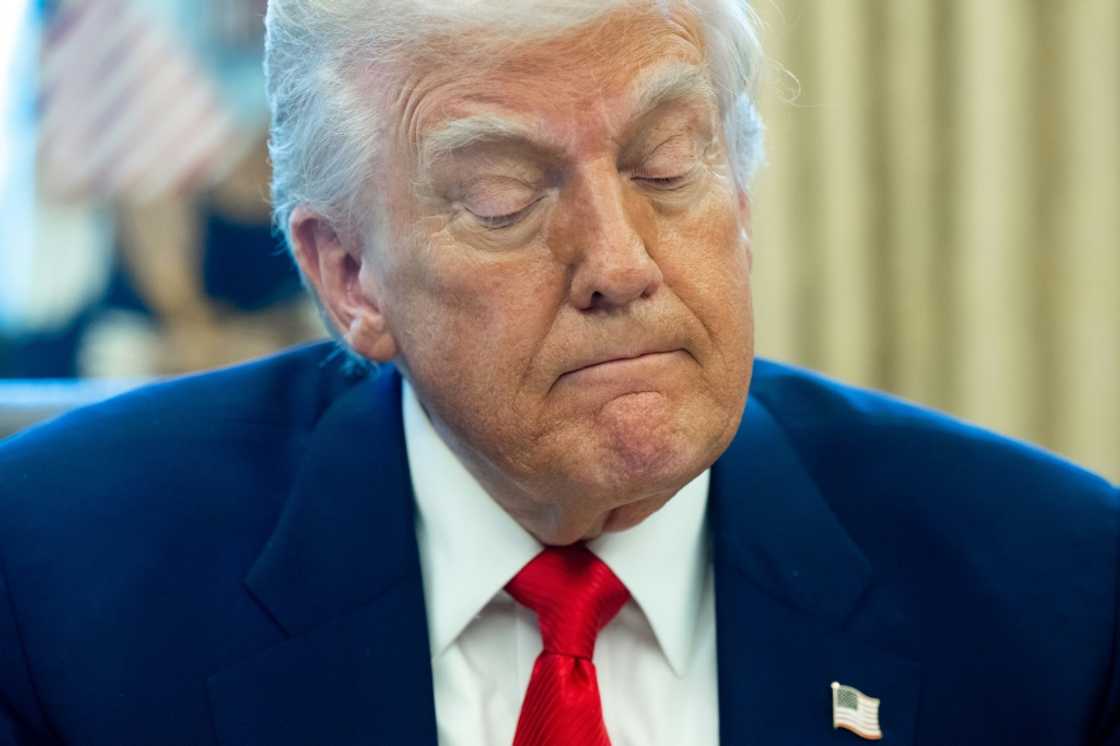Who Are the Targets of Trump's Tariffs?

As broad tariffs were imposed on major U.S. trade allies, President Donald Trump caused global economic turmoil on Wednesday only to retreat shortly thereafter — granting an exemption period of 90 days for everyone except China.
Below is an overview of the tariffs imposed by Trump during his second term, as tensions escalate in the trading conflict between Washington and Beijing.
China focus
China is hit with the most severe of Trump's tariffs, imposing an astonishing rate of 125 percent.
Although Trump's previous moves led to this week’s escalation of U.S. tariffs on Chinese products reaching 104 percent, he indicated the same day that he planned to increase them even more.
The amount encompassed a 20% charge attributed to China’s purported involvement in the fentanyl distribution network, a 34% tariff due to trading behaviors considered unjust by Washington, and an additional 50% duty following Beijing’s announcement of retaliatory measures.
In response, Beijing has imposed an 84 percent tariff on U.S. products, set to go into effect on Thursday, mirroring the most recent actions taken by Trump.
Trump's fresh tariffs on Chinese imports stack atop existing ones from previous administrations.
Global tariffs
Although Trump directed his harshest criticism at competitor China, other American allies and partners did not completely evade his actions.
On April 5, US trading partners faced a 10 percent "base" tariff, which continues to apply to countries such as the European Union, Japan, and Vietnam.
Notable exceptions do exist to this obligation.
Canada and Mexico, previously targeted due to concerns about illegal immigration and fentanyl, will not be subject to the new 10 percent global tariff. This exemption comes despite their status as immediate neighbors of the United States.
Copper, pharmaceuticals, semiconductors, and lumber are also exempt from this; however, these are industries where Trump is considering imposing tariffs.
Gold and silver, along with energy commodities, are not included either.
Autos, metals
Several industries have been targeted swiftly by Trump through tariff measures.
In March, he introduced a 25 percent tariff on imported steel and aluminum.
Earlier this month, a 25% tariff was imposed on imported automobiles, with plans for the duty to also cover car components in the future.
However, vehicles brought into the country under the terms of the United States-Mexico-Canada Agreement (USMCA) may be eligible for reduced tariffs. Additionally, compliant automotive components will enjoy duty-free status until procedures are established to identify those with non-US origins.
Canada, Mexico
Initially, Canadian and Mexican imports suffered significantly due to the 25 percent US tariff, although Canadian energy products encountered a slightly lower rate.
Trump targeted both neighbors saying they did not do enough on illegal immigration and the flow of illicit drugs across borders.
However, he ultimately declared exceptions for items entering his nation under the USMCA, encompassing extensive ranges of merchandise, with potash utilized as fertilizer receiving a reduced rate too.
Retaliation
In addition to the 84 percent tariffs imposed on U.S. imports, Beijing previously responded by targeting American farm products such as poultry, wheat, and cotton.
Canada has responded to President Trump's original duties and metal tariffs by imposing its own charges on approximately C$60 billion worth of American products, which include steel and computer equipment.
On Wednesday, the European Union implemented its initial set of countermeasures against the Trump administration, affecting more than 20 billion euros ($21.9 billion) worth of U.S. products such as soybeans, motorcycles, and cosmetics.
The collection of these duties will begin in mid-April and faced opposition due to Trump's metal tariffs.
Other threats
Trump has opened the door for 25-percent tariffs on goods from countries importing Venezuelan oil, a measure that could hit China and India.
He has similarly threatened "secondary tariffs" aimed at Russian oil.
Previously, he suggested imposing tariffs on industries such as pharmaceuticals and semiconductors, and also directed inquiries into the importation of copper and timber products.
Washington is currently investigating China's activities in the maritime and shipbuilding industries, with potential new penalties looming as a result.





